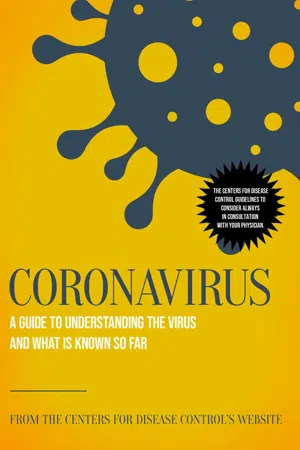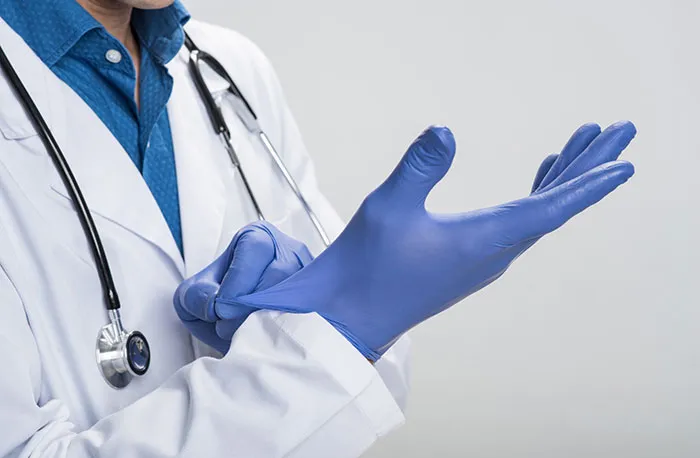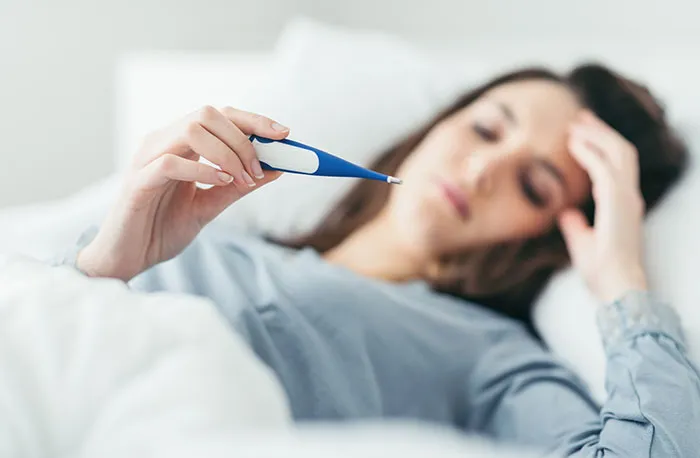
eBook - ePub
Coronavirus
A Guide to Understanding the Virus and What is Known So Far
- 780 pages
- English
- ePUB (mobile friendly)
- Available on iOS & Android
eBook - ePub
Coronavirus
A Guide to Understanding the Virus and What is Known So Far
About this book
The novel coronavirus that causes COVID-19 is now officially a global pandemic with over 130, 000 confirmed cases and over 5, 000 deaths. Its path is exponential, and panic is being felt around the globe. But the most important thing you can do to combat the virus is to understand how it works, how it spreads, and to STAY INFORMED. What Does This Coronavirus Outbreak Guide Contain?
- In-depth history of the virus since its inception
- Scientific explanation of what coronavirus is and how it works
- Actionable advice on how to stop the novel coronavirus from spreading
- Specific tips for employers, employers, and those who must travel during the outbreak
- Updated statistics on symptoms, treatment, and global survival rates.
This 2019-2020 Coronavirus Outbreak Guide is from the CDC Website. Learn the truth about how this virus works. And whatever you do, don't forget to wash your hands.
Frequently asked questions
Yes, you can cancel anytime from the Subscription tab in your account settings on the Perlego website. Your subscription will stay active until the end of your current billing period. Learn how to cancel your subscription.
No, books cannot be downloaded as external files, such as PDFs, for use outside of Perlego. However, you can download books within the Perlego app for offline reading on mobile or tablet. Learn more here.
Perlego offers two plans: Essential and Complete
- Essential is ideal for learners and professionals who enjoy exploring a wide range of subjects. Access the Essential Library with 800,000+ trusted titles and best-sellers across business, personal growth, and the humanities. Includes unlimited reading time and Standard Read Aloud voice.
- Complete: Perfect for advanced learners and researchers needing full, unrestricted access. Unlock 1.4M+ books across hundreds of subjects, including academic and specialized titles. The Complete Plan also includes advanced features like Premium Read Aloud and Research Assistant.
We are an online textbook subscription service, where you can get access to an entire online library for less than the price of a single book per month. With over 1 million books across 1000+ topics, we’ve got you covered! Learn more here.
Look out for the read-aloud symbol on your next book to see if you can listen to it. The read-aloud tool reads text aloud for you, highlighting the text as it is being read. You can pause it, speed it up and slow it down. Learn more here.
Yes! You can use the Perlego app on both iOS or Android devices to read anytime, anywhere — even offline. Perfect for commutes or when you’re on the go.
Please note we cannot support devices running on iOS 13 and Android 7 or earlier. Learn more about using the app.
Please note we cannot support devices running on iOS 13 and Android 7 or earlier. Learn more about using the app.
Yes, you can access Coronavirus by The Centers for Disease Control's Website in PDF and/or ePUB format, as well as other popular books in Medicine & Medical Theory, Practice & Reference. We have over one million books available in our catalogue for you to explore.
Information
Topic
MedicineInformation for Healthcare Professionals
Current Interim Guidance
• Interim Guidance for Public Health Personnel Evaluating Persons Under Investigation (PUIs) and Asymptomatic Close Contacts of Confirmed Cases at Their Home or Non-Home Residential Settings
• Interim Guidance for Collection and Submission of Postmortem Specimens from Deceased Persons Under Investigation (PUI) for COVID-19, February 2020
• Evaluating and Reporting Persons Under Investigation (PUI)
• Healthcare Infection Control Guidance
• Clinical Care Guidance
• Home Care Guidance
• Guidance for EMS
• Healthcare Personnel with Potential Exposure Guidance
• Inpatient Obstetric Healthcare Guidance
Resources for Healthcare Professionals Caring for COVID-19 Patients
• What Healthcare Providers Should Know
• Frequently Asked Questions for Healthcare Providers
Persons Under Investigation (PUI)

• Interim Guidance for Public Health Personnel Evaluating Persons Under Investigation (PUIs) and Asymptomatic Close Contacts of Confirmed Cases at Their Home or Non-Home Residential Settings
• Evaluating and Reporting PUI Guidance
• Reporting a PUI or Laboratory-Confirmed Case for COVID-19
Clinical Care

• Clinical Care Guidance
• Disposition of Hospitalized Patients with COVID-2019
• Inpatient Obstetric Healthcare Guidance
Infection Control

• Guidance and Resources on Infection Control
Supply of Personal Protective Equipment

• Guidance and Resources on Healthcare Supply of Personal Protective Equipment
Home Care
• Implementing Home Care of People Not Requiring Hospitalization
• Preventing COVID-19 from Spreading in Homes and Communities Disposition of Non-Hospitalized Patients with COVID-19
Webinar for Healthcare Professionals

Strategies for Healthcare Systems Preparedness and Optimizing N95 Supplies.
Find more information on supplies of personal protective equipment
View presentation slides
Evaluating and Testing Persons for Coronavirus Disease 2019 (COVID-19)
Summary of Recent Changes
Revisions were made on March 9, 2020, to reflect the following:
• Reorganized the Criteria to Guide Evaluation and Laboratory Testing for COVID-19 section
Revisions were made on March 4, 2020, to reflect the following:
• Criteria for evaluation of persons for testing for COVID-19 were expanded to include a wider group of symptomatic patients.
Limited information is available to characterize the spectrum of clinical illness associated with coronavirus disease 2019 (COVID-19). No vaccine or specific treatment for COVID-19 is available; care is supportive.
The CDC clinical criteria for considering testing for COVID-19 have been developed based on what is known about COVID-19 and are subject to change as additional information becomes available.
CDC Health Advisory

This is an official CDC Health Update
Update and Interim Guidance on Outbreak of Coronavirus Disease 2019 (COVID-19)
CDC continues to closely monitor an outbreak of respiratory illness caused by COVID-19 that was initially detected in Wuhan City, Hubei Province, China. This HAN Update provides a situational update and guidance to state and local health departments and health care providers.

Contact your local or state health department
Healthcare providers should immediately notify their local or state health department in the event of the identification of a PUI for COVID-19. When working with your local or state health department check their available hours.
Criteria to Guide Evaluation and Laboratory Testing for COVID-19
Clinicians should continue to work with their local and state health departments to coordinate testing through public health laboratories. In addition, COVID-19 diagnostic testing, authorized by the Food and Drug Administration under an Emergency Use Authorization (EUA), is becoming available in clinical laboratories. This additional testing capacity will allow clinicians to consider COVID-19 testing for a wider group of symptomatic patients.
Clinicians should use their judgment to determine if a patient has signs and symptoms compatible with COVID-19 and whether the patient should be tested. Most patients with confirmed COVID-19 have developed fever1 and/or symptoms of acute respiratory illness (e.g., cough, difficulty breathing). Priorities for testing may include:
1. Hospitalized patients who have signs and symptoms compatible with COVID-19 in order to inform decisions related to infection control.
2. Other symptomatic individuals such as, older adults and individuals with chronic medical conditions and/or an immunocompromised state that may put them at higher risk for poor outcomes (e.g., diabetes, heart disease, receiving immunosuppressive medications, chronic lung disease, chronic kidney disease).
3. Any persons including healthcare personnel2, who within 14 days of symptom onset had close contact3 with a suspect or laboratory-confirmed4 COVID-19 patient, or who have a history of travel from affected geographic areas5 (see below) within 14 days of their symptom onset.
There are epidemiologic factors that may also help guide decisions about COVID-19 testing. Documented COVID-19 infections in a jurisdiction and known community transmission may contribute to an epidemiologic risk assessment to inform testing decisions. Clinicians are strongly encouraged to test for other causes of respiratory illness (e.g., influenza).
Mildly ill patients should be encouraged to stay home and contact their healthcare provider by phone for guidance about clinical management. Patients who have severe symptoms, such as difficulty breathing, should seek care immediately. Older patients and individuals who have underlying medical conditions or are immunocompromised should contact their physician early in the course of even mild illness.
Recommendations for Reporting, Testing, and Specimen Collection
Clini1cians should immediately implement recommended infection prevention and control practices if a patient is suspected of having COVID-19. They should also notify infection control personnel at their healthcare facility and their state or local health department if a patient is classified as a PUI for COVID-19. State health departments that have identified a PUI or a laboratory-confirmed case should complete a PUI and Case Report form through the processes identified on CDC’s Coronavirus Disease 2019 website. State and local health departments can contact CDC’s Emergency Operations Center (EOC) at 770-488-7100 for assistance with obtaining, storing, and shipping appropriate specimens to CDC for testing, including after hours or on weekends or holidays.
For initial diagnostic testing for COVID-19, CDC recommends collecting and testing upper respiratory tract specimens (nasopharyngeal AND oropharyngeal swabs). CDC also recommends testing lower respiratory tract specimens, if available. For patients who develop a productive cough, sputum should be collected and tested for COVID-19. The induction of sputum is not recommended. For patients for whom it is clinically indicated (e.g., those receiving invasive mechanical ventilation), a lower respiratory tract aspirate or bronchoalveolar lavage sample should be collected and tested as a lower respiratory tract specimen. Specimens should be collected as soon as possible once a PUI is identified, regardless of the time of symptom onset. See Interim Guidelines for Collecting, Handling, and Testing Clinical Specimens from Patients Under Investigation (PUIs) for COVID-19 and Biosafety FAQs for handling and processing specimens from suspected cases and PUIs.
Interim Guidance for Collection and Submission of Postmortem Specimens from Deceased Persons Under Investigation (PUI) for COVID-19, February 2020
State and local health departments who have identified a Persons Under Investigation (PUI) should immediately notify CDC’s Emergency Operations Center (EOC) at 770-488-7100 to report a deceased PUI and determine whether testing for SARS-CoV-2, the virus that causes COVID-19, at CDC is indicated. The EOC will assist local/state health departments to collect, store, and ship specimens appropriately to CDC, including during afterhours or on weekends/holidays.
CDC is available for urgent consultation in the event that an autopsy on a COVID-19 PUI is being considered. CDC can be reached for urgent consultation by calling the EOC at 770-488-7100.
This interim guidance is based on what is currently known about COVID-19. The Centers for Disease Control and Prevention (CDC) will update this interim guidance as needed and as additional information becomes available.
The CDC is closely monitoring an outbreak of respiratory illness caused by a novel (new) coronavirus (named SARS-CoV-2); this illness is now called coronavirus disease 2019 or COVID-19. This virus was first identified in Wuhan, Hubei Province, China and it continues to spread. CDC is working across the Department of Health and Human Services and other parts of the U.S. government in the public health response to COVID-19.
Much is unknown about COVID-19. Current knowledge is largely based on what is known about similar coronaviruses. Coronaviruses are a large family of viruses that are common in many different species of animals, including camels, cattle, cats, and bats. Rarely, animal coronaviruses can infect people and then spread between people such as with MERS-CoV, SARS-CoV, and now with SARS-CoV-2, the virus that causes COVID-19. Most often, spread from a living person happens with close contact (i.e., within about 6 feet) via respiratory droplets produced when an infected person coughs or sneezes, similar to how influenza and other respiratory pathogens spread. This route of transmission is not a concern when handling human remains or performing postmortem procedures. Postmortem activities should be conducted with a focus on avoiding aerosol generating procedures, and ensuring that if aerosol generation is likely (e.g., when using an oscillating saw) that appropriate engineering controls and personal protective equipment (PPE) are used. These precautions and the use of Standard Precautions should ensure that appropriate work practices are used to prevent direct contact with infectious material, percutaneous injury, and hazards...
Table of contents
- Cover
- Title Page
- Copyright Page
- Table of Contents
- COVID-19 Situation Summary
- What You Should Know
- Travel Information
- Preventing COVID-19 Spread in Communities
- Protect Yourself & Family
- Higher Risk & Special Populations
- Healthcare Professionals
- Resources for Healthcare Facilities
- Resources for Health Departments
- Laboratories
- Communication Resources